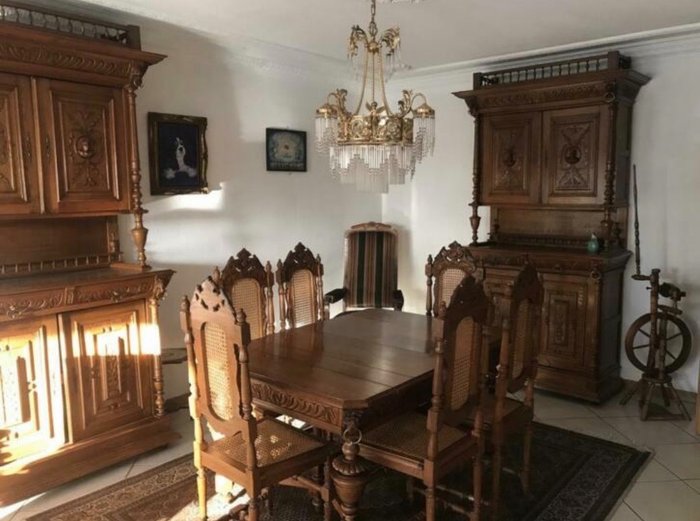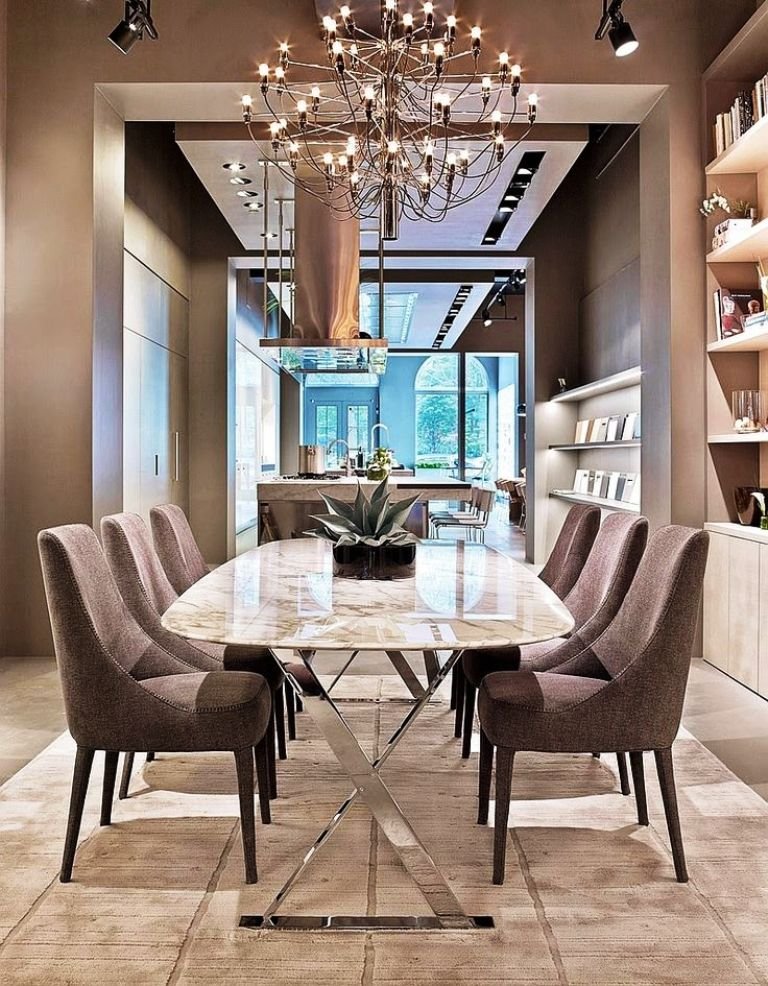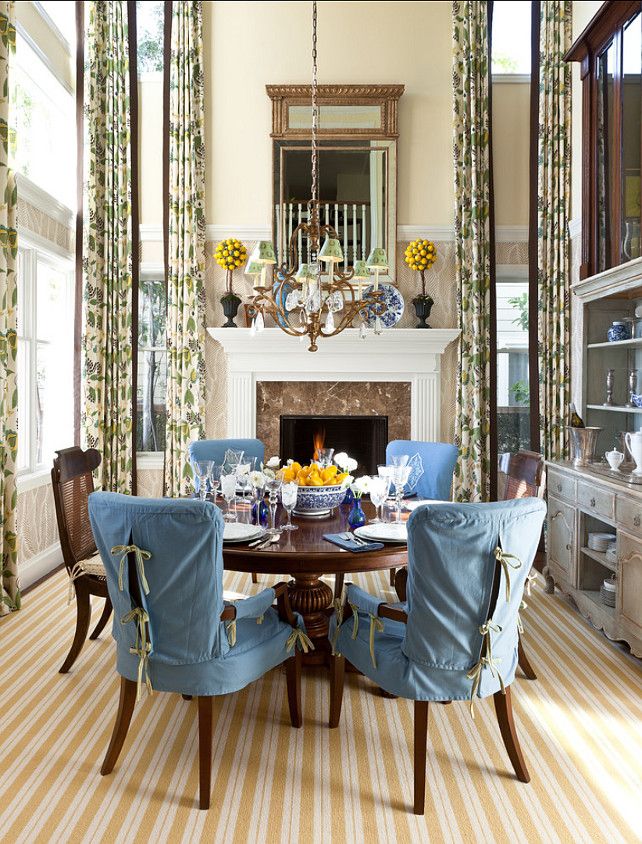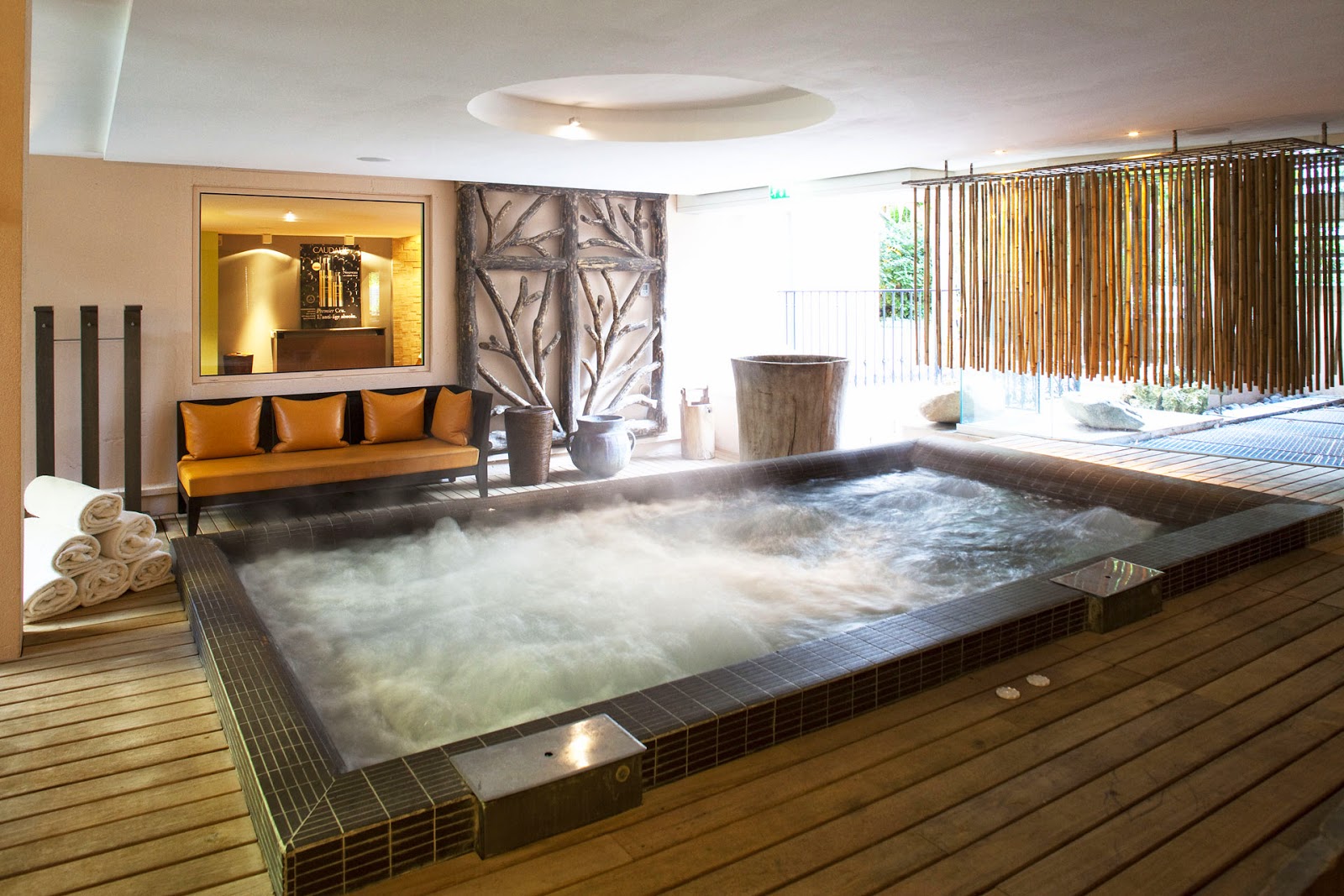Victorian dining room
The Victorian era, which spanned from the mid to late 19th century, was a time of opulence and grandeur in home design. The dining room was no exception, with its elaborate and ornate furnishings that were a reflection of the social status and wealth of the homeowner. A Victorian dining room was a space where fine dining and lavish entertaining took place, and it was often the most decorated and impressive room in the house.
19th century dining table
At the center of the Victorian dining room was the dining table, which was a symbol of wealth and status. These tables were often made of solid wood, such as mahogany or walnut, and featured intricate carvings and details. They were also often extendable to accommodate large dinner parties and had beautiful, decorative legs that added to the overall grandeur of the room.
Antique dining chairs
No Victorian dining room would be complete without a set of antique dining chairs. These chairs were typically made of wood and featured upholstered seats and backs, often with intricate designs and patterns. They were designed to be both comfortable and visually appealing, and were often adorned with tassels, fringes, and other decorative elements.
Formal dining room
The Victorian dining room was a formal space, reserved for special occasions and entertaining guests. It was usually located near the entrance of the house and was connected to the kitchen for easy access to food and drinks. The formal nature of the dining room was reflected in the elegant and luxurious furnishings and decor.
Gilded dining room chandelier
No Victorian dining room would be complete without a gilded chandelier hanging above the dining table. These chandeliers were often made of crystal or glass and featured intricate designs and details. They were a symbol of wealth and added a touch of glamour and sparkle to the room.
Ornate dining room furniture
In addition to the dining table and chairs, a Victorian dining room would also feature other ornate pieces of furniture, such as sideboards, cabinets, and buffets. These pieces were often made of the same wood as the dining table and were used to store fine china, silverware, and other dining essentials.
Victorian era dining room decor
The decor of a Victorian dining room was all about luxury and excess. Rich fabrics, such as velvet and silk, were used for curtains, tablecloths, and upholstery. The walls were often covered in intricate wallpaper or adorned with detailed wood paneling. Ornate rugs, vases, and other decorative items were also used to add to the overall opulence of the room.
Late 1800s dining room design
The late 19th century saw a shift in dining room design, with a move towards a more eclectic and diverse style. While the opulence and grandeur of the Victorian era were still present, there was also a growing interest in incorporating elements from other cultures and time periods. This resulted in a fusion of styles, making late 1800s dining rooms unique and visually interesting.
Traditional dining room set
A traditional dining room set in the late 19th century would typically consist of a dining table, chairs, and a sideboard or buffet. The style and design of these pieces would often be influenced by the Victorian era, with intricate details and rich materials. However, as mentioned before, there was also a growing interest in incorporating different styles, which could result in a more eclectic and personalized dining room set.
Historic dining room interior
The Victorian dining room holds a special place in history as it reflects the social and cultural values of the time. It was a space where families and friends gathered to share meals and celebrate special occasions. The grandeur and opulence of the room also served as a way for homeowners to showcase their wealth and status, making it an important part of their identity and social standing.
The Evolution of Dining Rooms in the Late 19th Century

The Importance of the Dining Room
 The late 19th century saw a major shift in the design and function of dining rooms. This was largely due to the rise of the middle class and the increasing importance placed on social gatherings and entertaining. Dining rooms became a central space in the home, where families and guests would come together to share meals and engage in lively conversation. As a result, the design of dining rooms became more elaborate and sophisticated, with a focus on creating a welcoming and elegant atmosphere.
The late 19th century saw a major shift in the design and function of dining rooms. This was largely due to the rise of the middle class and the increasing importance placed on social gatherings and entertaining. Dining rooms became a central space in the home, where families and guests would come together to share meals and engage in lively conversation. As a result, the design of dining rooms became more elaborate and sophisticated, with a focus on creating a welcoming and elegant atmosphere.
Influence of Victorian Style
 During this time period, the Victorian era was in full swing and had a significant impact on the design of dining rooms. Victorian style was known for its opulence and grandeur, and this was reflected in the design of dining rooms. Rich, dark woods, intricate detailing, and ornate furnishings were all hallmarks of Victorian dining room design. This style was seen as a symbol of wealth and status, and many middle-class families aspired to recreate the lavish dining rooms of the upper class.
During this time period, the Victorian era was in full swing and had a significant impact on the design of dining rooms. Victorian style was known for its opulence and grandeur, and this was reflected in the design of dining rooms. Rich, dark woods, intricate detailing, and ornate furnishings were all hallmarks of Victorian dining room design. This style was seen as a symbol of wealth and status, and many middle-class families aspired to recreate the lavish dining rooms of the upper class.
The Rise of Formal Dining
 As dining rooms became a more prominent space in the home, the concept of formal dining also gained popularity. Formal dining involved strict etiquette and elaborate, multi-course meals. This required a proper dining room set-up, complete with a large table, matching chairs, and fine china and silverware. It was not uncommon for families to have separate dining rooms for everyday meals and formal dining occasions.
As dining rooms became a more prominent space in the home, the concept of formal dining also gained popularity. Formal dining involved strict etiquette and elaborate, multi-course meals. This required a proper dining room set-up, complete with a large table, matching chairs, and fine china and silverware. It was not uncommon for families to have separate dining rooms for everyday meals and formal dining occasions.
Technological Advancements
 The late 19th century also saw significant advancements in technology, which had a direct impact on dining room design. The invention of gas and electric lighting allowed for more elaborate chandeliers and lamps, adding to the overall ambiance of the dining room. The introduction of central heating also made dining rooms more comfortable and inviting, as families no longer had to rely on fireplaces for warmth.
The late 19th century also saw significant advancements in technology, which had a direct impact on dining room design. The invention of gas and electric lighting allowed for more elaborate chandeliers and lamps, adding to the overall ambiance of the dining room. The introduction of central heating also made dining rooms more comfortable and inviting, as families no longer had to rely on fireplaces for warmth.
The Legacy of Late 19th Century Dining Rooms
 The late 19th century dining room set the foundation for the modern-day dining room. The emphasis on elegant design, formal dining, and technological advancements all continue to influence dining room design today. While the styles and trends may have evolved, the importance of the dining room as a central gathering space remains unchanged. The late 19th century dining room truly paved the way for the dining rooms we know and love today.
The late 19th century dining room set the foundation for the modern-day dining room. The emphasis on elegant design, formal dining, and technological advancements all continue to influence dining room design today. While the styles and trends may have evolved, the importance of the dining room as a central gathering space remains unchanged. The late 19th century dining room truly paved the way for the dining rooms we know and love today.

















































/Chandelier_0635-0b1c24a8045f4a2cbdf083d80ef0f658.jpg)
































































